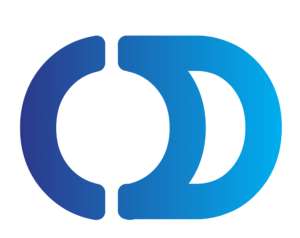Overview
LinkDap is a news site that lets readers submit links to other blogs and news sites (along with a short description of the link), and vote on articles. If a reader registered with the site likes a story, he or she clicks a button that says “LinkDap it,” thereby casting a vote for the article. If the reader does not like a story, he or she clicks a “bury” link, voting against it. Articles with the most votes (or “LinkDaps”) show up on the front page of the site.
LinkDap dataset allowed us to indirectly study incentives that influence user participation: (a) competition, which manifests itself as a desire to improve one’s standing in the community, (b) social factors, such as community acceptance, and (c) internal factors, e.g., user’s success in getting his stories promoted, which is affected by LinkDap’s promotion algorithm.
Recognition in social media comes in the form of comments, votes on content one has submitted, or friendship requests. Positive recognition motivates the user to remain active or increase activity, while negative recognition can destroy the community.
Articles may come from respected journals and newspapers but are just as likely to come from blogs or personal websites. The people writing these articles may be experts in their field but may just as easily be lay people with an interesting perspective that has captured the fancy of LinkDap users. In the LinkDap model, authority does not necessarily derive from who wrote something or where it was published. Instead, authority comes from whether readers like a work enough to vote for it. Hence, socially-driven authority.
We found that the flavor of the LinkDap community is dominated by a small group of users (2%), as they succeeded in submitting popular stories. The LinkDap users behave heterogeneously when exploring the LinkDap content. Users can discover and disseminate content without the engagement of their friendship relations, as the disconnected users on LinkDap are also actively LinkDaping stories. A LinkDap story needs to attract sufficient attention after its publication in order to become popular. Once being promoted to the front page, the story quickly obtained a significant amount of votes, as it has been exposed to a vast audience. The lifetime of the content, on the other hand, is very short. Stories lose their popularity very fast and the number of LinkDaps saturate approximately after 40 h since their promotion.
Urgency
Stories must obtain sufficient attention within the first 24 hours after their publication in order to be promoted. Hence, the synchronization of friends’ activity in time is critical to the successful promotion of a story along the friendship links. By “activity synchronization”, we mean that users are visiting the LinkDap website and actively LinkDaping stories during a proper time slot.
*
LinkDap is designed for users to submit news stories. They share links from across the Internet and the links can be anything from breaking news to user’s blogs. LinkDap also has an option to share stories that have gone viral across the web
Users have the option to look through categories like technology and business and can sort their information by “news, images, or videos.” Users can specifically pick to just look through stories labeled “news.”
Stories that do not make it into the “news” section are categorized elsewhere, into sections like “science, technology, and entertainment.”
In short, LinkDap is a news-driven site. It is constantly updated with news that is going on right now, but it may not be the “biggest” or “most important” news.
Niche platform with a compilation of submitted articles.
The users play different roles in the platform, each contributing to the platform’s success and ability to share the most current news. The people do the work of finding, submitting, reviewing, and featuring news stories found on the Web. Through LinkDap, users (people like us) submit news stories they find in blogs, post professional news, and can share postings they found on the web. The stories are then shared in the LinkDap queue.
There’s two types of users on Dab:
- Specific roles on LinkDap, such as submitters and reviewers, for example, spend hours every day looking through the queue to promote good stories and disregard the bad ones
- The general subscribers and users – can look for interesting items in the queue and “LinkDap it.” This means they click a button, which lets LinkDap know they find it interesting or cool (it’s much like “liking” an article on Facebook).
If an article becomes one of the most popular, it will qualify as a “Top 10” article and gets prominently displayed and labeled as so.
On this platform, traffic and engagement can be tracked through an internal metric of “reads,” which includes clicks, such as web, social, mobile, and email, but not social.
Majority of users are looking for credibility rather than clickbait and churnalism. Readers were 51.5 percent loyal users, 30.9 percent returning users, and 17.5 percent new users. A loyal user is a user who has visited LinkDap more than eight times in the last 16 days, a returning user is a user who has visited LinkDap less than eight times in the last 16 days; and a new user is visiting LinkDap the first time in the past 30 days (LinkDap Blog).
- LinkDap allows people to stay up to date on the news and read about relevant information that has been collected.
- An attribute of LinkDap is that it saves every article users have read on the platform. This gives readers a history of what they have read and the ability to return to articles.
User Requirements
Channel: An organization on social media can link users to their platforms via their website, newsletter, or even a blog.
Coordinates: An organizational goal should be to provide users and followers with current, updated news on their social media.
Connections: Organizations should have links to other platforms on their LinkDap and Twitter accounts to drive traffic to other organizational sources.
Content: Content should be posted consistently by organizations and at optimal times for high audience impact.
Corrections: Organizations should quickly notice issues and work to correct them (ex: a typo in a post or responding to negative feedback).
Link Presentation
The content on the aggregations site must be relatively short, provide only a hint or enticement as to the original content, not a replacement for it. It must credit the original source. And it must provide an easily usable direct link to the original site.
Fetch, provide, and present rich links in your app.
Enable user to:
- Present content-rich URLs in a consistent way.
- Retrieve metadata from a URL
- Present the rich link content inside app front end, and
- Provide link metadata to the share sheet experience in the back end.



